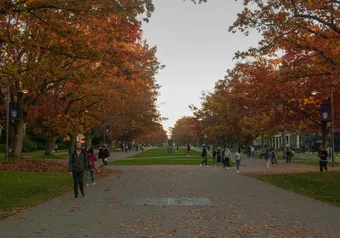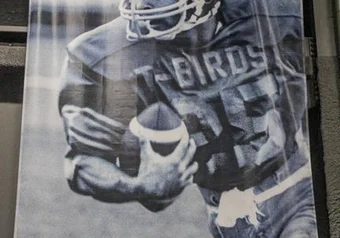At a town hall meeting on the proposed rapid transit to UBC, panelists hammered home the urgency of improving the Broadway corridor’s transit capacity — and the perks of bringing it to campus.
Hosted by Vancouver Quadra MP Joyce Murray, the event brought together stakeholders of the rapid transit issue for a discussion centering around information brought up by its five-person panel.
After Murray’s discussion about the federal government’s infrastructure investments and green infrastructure initiatives, the event went into presentations by panelists, including UBC’s Associate VP Campus and Community Planning Michael White, Translink’s VP Infrastructure Management and Engineering Sany Zein, City of Vancouver’s Chief engineer Jerry Dobrovolny and West Broadway Business Improvement Association’s Manager Michelle Barile.
- Broadway Skytrain gets largest part of Translink’s expected $7.3 billion phase two investment
- UBC supports rapid transit expansion to campus
Over the course of the two-hour meeting, constituents brought up a range of concerns ranging from business to affordability to prioritization of student housing. But if anything, the panelists have already started preliminary work to make the extension a reality.
Destination UBC
“The theme you’re going to be hearing from me in the next 15 minutes: it’s gonna be a lot of, ‘Why stop short?’”
White’s presentation reiterated talking points that UBC has released since the university’s Board of Governors expressed its support for rapid transit in its April 19 meeting. He and other panelists argued that improving transit access to “UBC City” — which had over 64 million boardings combined on all of its bus routes in 2015, according to Translink — would stimulate the economic, research and social hubs that exist along the Broadway corridor.
Why within a decade? White talking about the "significant" economic role of UBC, including the 24,000 overnight residents on UBC itself. "We're about the size of the city of Kamloops during the day."
— Ubyssey News (@UbysseyNews) July 28, 2018
“We’ve nicknamed it ‘the brain train,’” said Dobrovolny, referencing the opportunities that could come from linking UBC to Vancouver General Hospital and other research centres.
The line might also be a boon to campus community members struggling to afford rent in Vancouver’s core. When asked if this would dis-incentivize UBC from building more affordable housing, White said that the university’s Board is pushing for both instead of choosing one over the other.
“Our Board has said, “It’s both,” and they have been, in the last six months, cracking the whip pretty hard,” White said.
Details are still being fleshed out, as Translink has listed the extension as a “future project.”
But as previously noted, White affirmed that UBC is ready to contribute land, development charges, non-academic related financial funding or a combination of them — the exact amount of which is still to be determined. The Board of Governors is also exploring the possibility of hosting two stations on campus: one on University Boulevard and Wesbrook Mall, and a second location somewhere on south campus.
But while the logistics are still being examined, White — and UBC — seem committed to making sure the project goes forward.
“This townhall is not about selling you anything,” joked Murray. “That’s UBC’s job.”
“The 99 cannot keep up anymore”
Whether or not the extension is approved, panelists agreed that current transit infrastructure just doesn’t cut it — and a subway is likely the best solution.
Over 100,000 transit trips are made along the Broadway corridor each day, with 140,000 projected for 2025. Bus frequency has grown to the point where the 99 B-Line is already failing to address transit needs.
“We are constantly leaving people behind at the bus station,” said Zein, showing a photo of crowds at the B-Line’s terminus stop at Commercial-Broadway station.
While constituents mentioned alternative transit systems including dedicated rapid transit bus lanes and light rail transit (LRT) panelists maintained that extensive research had gone into the choice of a subway.
“We looked at more than 200 different options before coming to this decision,” said Zein. “Even LRT would not get us to where we needed to be in the context of a 100-year system.”
Zein: We looked at more than 200 different options before coming to this decision. "Even LRT would not get us to where we needed to be in the context of a 100-year system.... the trains would be the size of a city block in order to satisfy capacity."
— Ubyssey News (@UbysseyNews) July 28, 2018
Zein added that bus capacity had already peaked, with so many B-Lines in operation that Zein said adding more would only increase congestion.
“We tried putting more B-Lines on the road ... all they started doing was interfering with each other and slowing each other down,” said Zein.
“We don't want an Oakridge. We don't want a Metrotown.”
Not every constituent was convinced.
Many, including West Point Grey Residents Association representative Elizabeth Murphy, raised concerns about the impact of development, especially consequences for local businesses and the potential loss of neighbourhood amenities. She was unconvinced by the economic benefits of the expansion, calling it “an expensive line to nowhere.”
“We don’t want an Oakridge. We don’t want a Metrotown,” said Murphy. “The cost of development here … could be very harsh.”
Q: This is going to take 7 years minimum to build. What's going to happen to access to Broadway in that time?
— Ubyssey News (@UbysseyNews) July 28, 2018
Dobrovolny: Mayor is crystal clear it's a tunnelled line. Construction would be focused around new stations.
Dobrovolny responded that in previous Skytrain expansions — like around Nanaimo station on — single-family homes remained even after development, but acknowledgement the importance of density.
“Change is hard,” he conceded. He added that the initial projections were not “a land use plan or a rezoning plan,” but indicated that the city is developing one to regulate development along the corridor.
Local buses will still be operating along this corridor under this plan, according to Zein’s response to a previous question.
But while panelists were ready to address concerns, they argued that the Broadway subway isn’t just necessary — it’s overdue.
“We are 20 years behind already,” said Dobrovolny. “We need to do something quickly.”
Share this article
First online





